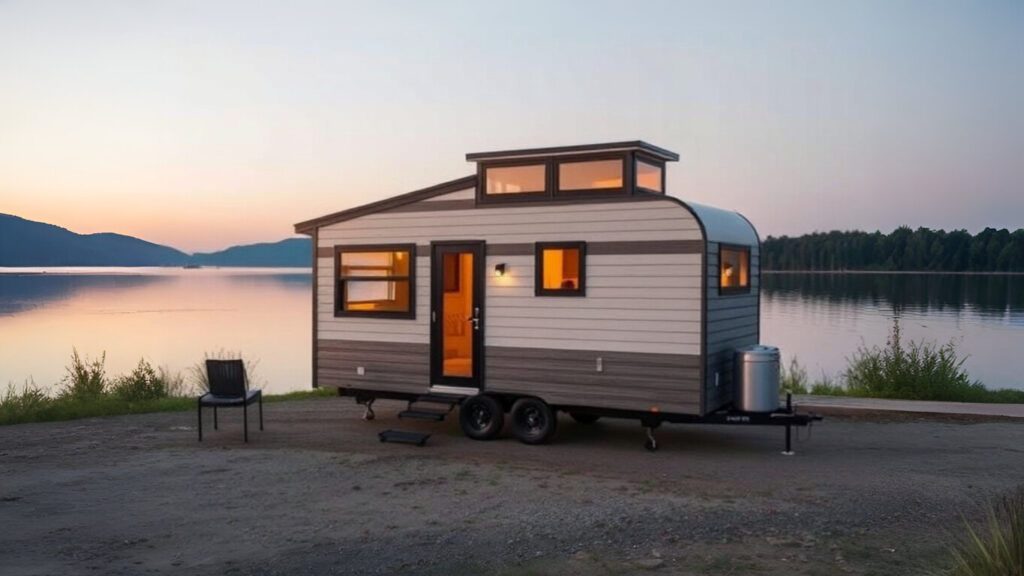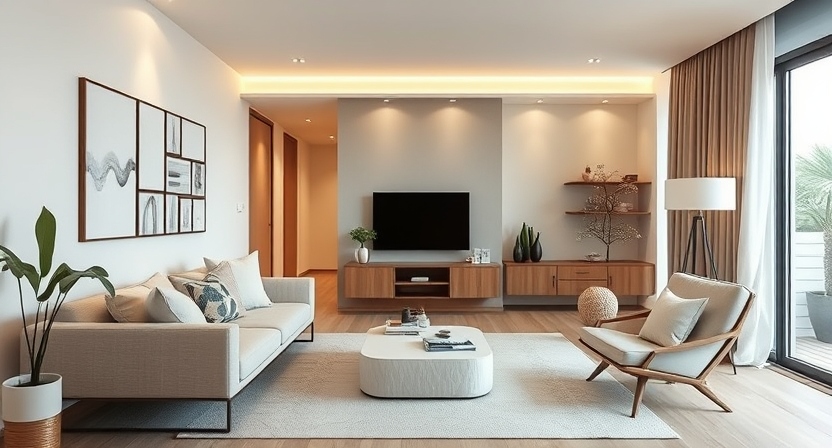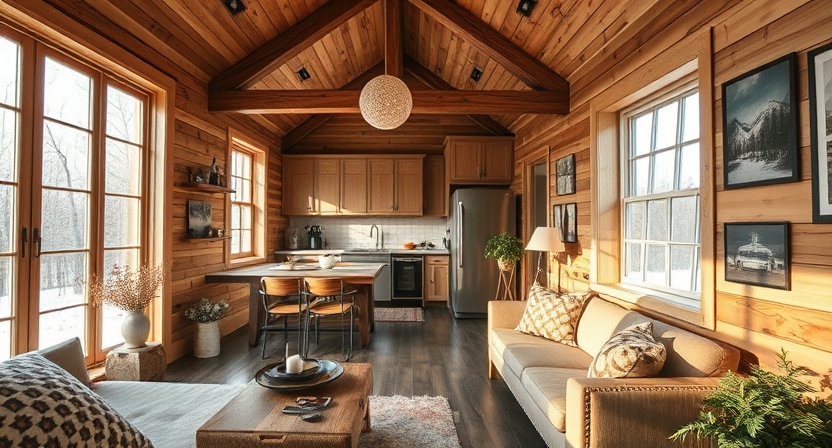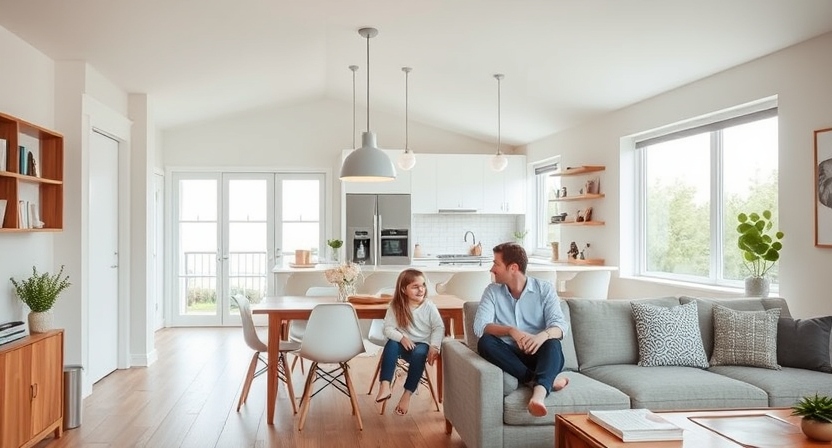Luxury Small Homes: The New Trend in Modern Living in a small space doesn’t mean compromising on luxury. With innovative designs and high-quality materials, luxury small homes have become a popular choice for people seeking comfort, elegance, and efficiency. In this post, we’ll explore what makes luxury small homes appealing, their pros and cons, and why they’re becoming the future of living.
What Are Luxury Small Homes?
Luxury small homes combine sophisticated design, premium materials, and modern amenities in a compact space. These homes typically range from 400 to 1,000 square feet but make up for their size with functionality, aesthetics, and top-tier features. Whether it’s a tiny house on wheels, a high-end apartment, or a prefabricated modular home, luxury small homes cater to those who value quality over quantity.
Pros of Luxury Small Homes

Cost-Effective:
- Lower Construction Costs: Building a smaller home requires fewer materials and labor, making it more affordable.
- Reduced Maintenance Expenses: With less square footage, upkeep costs are minimal.
- Energy Efficiency: Smaller homes use less energy, leading to significant savings on utility bills.
Sustainability:
- Many luxury small homes use eco-friendly materials and sustainable building practices.
- Energy-efficient systems, like solar panels and smart thermostats, reduce the carbon footprint.
Efficient Use of Space:
- Clever designs incorporate multi-functional furniture, hidden storage, and open layouts, maximizing every inch.
- Spaces are tailored to meet specific needs without unnecessary extras.
Lifestyle Benefits:
- Encourages minimalism and decluttering.
- Easier to clean and maintain.
- Ideal for people who want to live simply but stylishly.
Mobility:
- Tiny homes on wheels offer the flexibility to move locations, making them perfect for travel enthusiasts.
Cons of Luxury Small Homes

Limited Space:
- Storage can be a challenge, especially for families or those with many possessions.
- Entertaining guests might feel cramped compared to larger homes.
Zoning and Legal Restrictions:
- Some areas have strict zoning laws that limit the construction of small homes.
- Tiny homes on wheels might face restrictions on parking or permanent residency.
Customization Costs:
- Adding luxury features to a small space can increase costs per square foot.
- High-end materials and finishes often come with a hefty price tag.
Resale Value Concerns:
- While luxury small homes are trendy, they cater to a niche market, potentially making resale more challenging.
Adjusting to Minimalism:
- Downsizing requires significant lifestyle adjustments, which may not suit everyone.
ALSO READ : 6 Most Popular Types of Tiny Houses
Key Features of Luxury Small Homes

- Premium Materials:
Use of high-quality woods, stones, and metals for a sophisticated look.
- Modern Amenities:
Smart home technology, including automated lighting, climate control, and security systems.
Innovative Designs:
Space-saving solutions like foldable furniture, lofted beds, and hidden compartments.
Custom Aesthetics:
Personalized designs to reflect the homeowner’s style, from minimalist to rustic.
Key Features of Luxury Small Homes

- Premium Materials:
Use of high-quality woods, stones, and metals for a sophisticated look.
- Modern Amenities:
Smart home technology, including automated lighting, climate control, and security systems.
Innovative Designs:
Space-saving solutions like foldable furniture, lofted beds, and hidden compartments.
Custom Aesthetics:
Personalized designs to reflect the homeowner’s style, from minimalist to rustic.
Who Are Luxury Small Homes For?

- Young professionals seeking affordable but stylish homes.
- Retirees downsizing for simplicity and comfort.
- Eco-conscious individuals looking to reduce their environmental impact.
- Digital nomads and frequent travelers who prefer mobility and flexibility.
Conclusion
Luxury small homes are redefining the idea of comfortable living. They prove that less can indeed be more—offering all the comforts of a larger house in a compact, sustainable package. While there are challenges to consider, the benefits of reduced costs, environmental impact, and stylish designs make these homes an attractive option for modern lifestyles.
FAQs About Luxury Small Homes
1. Are luxury small homes expensive? While the overall cost is lower than traditional luxury homes, the cost per square foot might be higher due to premium materials and features.
2. Can a small home be eco-friendly? Yes! Many luxury small homes incorporate sustainable practices, energy-efficient appliances, and renewable energy sources.
3. What is the average size of a luxury small home? Typically, they range between 400 and 1,000 square feet.
4. Are luxury small homes suitable for families? They can be, but families may need to prioritize space-saving designs and creative layouts.
5. How do I start designing a luxury small home? Begin by identifying your needs, consulting with architects or designers, and researching modern small home trends.
Recent Posts

Anthony is a professional home designer known for creating stylish, functional, and innovative living spaces. With a keen eye for detail and a passion for aesthetics, he transforms ideas into reality, ensuring every home reflects elegance, comfort, and personality. His expertise brings dream homes to life with creativity and precision.
